Things to do in Pemba and Northern Mozambique
Although southern Mozambique is more easily accessible by road, the north is bursting with natural attractions and stunning beach resorts. It's increasingly attracting international visitors and developing tourist infrastructure to accommodate them.
Near the middle of the long, narrow country, the port city of Beira operates as a gateway to the north, particularly the Gorongosa National Park, the Cahora Bassa Lake, and the gorgeous Ilha de Mozambique, an island celebrated for both natural and cultural attractions.
Nestled in the far north, the port town of Pemba is another increasingly popular travel hub in Mozambique. From this shabby but picturesque town, tourists can access pristine white beaches, tropical islands, unspoilt wilderness, and national parks.
The Quirimbas Archipelago is Mozambique's new hotspot for beach holidays. A UNESCO site, the 31 islands in the chain are a haven for scuba divers and fishermen, with fascinating histories complementing the lovely beaches.
Inland from Pemba, the Niassa Game Reserve is a massive protected wilderness. Visitors should not that roads in the northern provinces of Mozambique are riddled with potholes and often require 4x4 vehicles. Travel is substantially harder in the rainy season of October to March, with mud making many routes impassable and resulting in reserves closing.
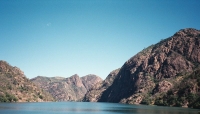
Cahora Bassa Lake
Situated in the Tete Province of Mozambique, Cahora Bassa is one of Africa's largest artificial lakes. One of three major dams on the Zambezi river system, along with Kariba and It…
Cahora Bassa Lake
Situated in the Tete Province of Mozambique, Cahora Bassa is one of Africa's largest artificial lakes. One of three major dams on the Zambezi river system, along with Kariba and Itezhi-Tezhi, it powers the largest hydroelectric scheme in southern Africa. Songo is the nearest town, established in 1969 to house workers for the construction of the dam. There is a number of lodges and camps where tourists can stay, including Ugezi Tiger Lodge, which has an à la carte restaurant and a campsite with floodlights and security. Fishing is the dam's biggest drawcard and fishing trips are very popular, as the vast stretch of water contains a huge variety of fish, including tigerfish, sharptooth catfish, vundu, bream, longfin eels, and Zambezi parrotfish. Other attractions in the area include boat cruises and waterskiing. The lake and surrounding landscapes are very picturesque, replete with lush vegetation, dramatic mountain scenery, and a large population of hippos. Majestic baobab trees grow on the southern shores, while the area's rich birdlife will enthral bird enthusiasts. Sunset cruises and boat tours down the beautiful gorges of the dam are a must for travellers in the region.
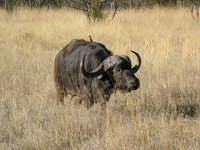
Gorongosa National Park
Often referred to as the 'place where Noah parked his ark', Gorongosa National Park was a popular tourist destination for the rich and famous back in the 1960s. During this time, t…
Gorongosa National Park
Often referred to as the 'place where Noah parked his ark', Gorongosa National Park was a popular tourist destination for the rich and famous back in the 1960s. During this time, the region's abundant wildlife attracted stars such as John Wayne, Joan Crawford, and Gregory Peck. The subsequent years of war and poaching decimated the wildlife count, with programmes implemented to restore the park to its previous star status as one of the richest wildlife refuges on the planet. Dominated by savanna and grassland, Gorongosa has a variety of terrain. Along with woodland and impressive limestone gorges, with lush rainforest covering the slopes. The park now includes the verdant Mount Gorongosa, source of the life-sustaining rivers that traverse the reserve. The mountain is sacred and features prominently in traditional folklore. Even after 17 years of civil war and extensive poaching, the Gorongosa National Park still supports astounding biodiversity and wondrous beauty. Experts have documented 398 bird species, 122 mammals, 34 reptiles, and 43 amphibians. Comfortable lodgings are available for visitors, and game-viewing highlights include elephants, buffalo, lions, crocodiles, and zebra.
Website www.gorongosa.org/
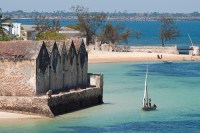
Ilha de Mozambique
Ilha de Mozambique is an island in the Nampula Province of northern Mozambique, up the coast from Beira. Home to a fascinating heritage, it was an ancient trading port and the capi…
Ilha de Mozambique
Ilha de Mozambique is an island in the Nampula Province of northern Mozambique, up the coast from Beira. Home to a fascinating heritage, it was an ancient trading port and the capital for nearly four centuries while under Portuguese rule before the move to Lourenco Marques, now Maputo. Now a UNESCO World Heritage Site, the Island of Mozambique is an exquisite mix of Portuguese and Muslim architecture. These divide old Stone Town in the north and Reed Town in the south. There's a great museum found inside the Palacio Govierno, a big red building in Stone Town. Also worth seeing is the fort at the eastern tip of the island, home to the Chapel of Nossa Senhora de Baluarte. It is possibly the oldest surviving European building in the southern hemisphere, dating back to 1522. On a beach on the northern end of the island, there is a dive centre where visitors can take boat trips or just laze on the sand. The more adventurous should travel by dhow to Chaga or Mossuril on the mainland to explore the coast. Requilias and Escondidino are two popular restaurants in Stone Town, and there are a number of local places serving fish and rice, or chima. One of the best options for accommodation is the campsite on the mainland, next to the bridge.
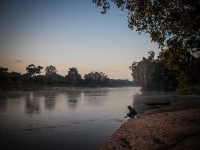
Niassa Game Reserve
Spanning an area of some 24,000 square kilometres (10 million acres), the Niassa Game Reserve is the largest protected area in Mozambique. It's one of the most pristine wilderness …
Niassa Game Reserve
Spanning an area of some 24,000 square kilometres (10 million acres), the Niassa Game Reserve is the largest protected area in Mozambique. It's one of the most pristine wilderness regions in the whole of Africa. Roughly the size of Denmark, the Niassa Reserve is twice the size of South Africa's famed Kruger National Park and boasts an abundance of wildlife, including varied birdlife, and absolutely stunning natural scenery. The park is special because it's essentially a wilderness area and is relatively unexplored. Visitors to the Niassa Game Reserve are spellbound by the changing landscape, ranging from mountain forests to miombo woodlands and savanna grasslands. This is not to mention the high concentration of wild animals, including something like 13,000 elephants, 200 endangered wild dogs, lions, leopards, and a huge assortment of birds. Giant rock formations, of which Mecula Mountain is the largest, are another exciting feature of the park. Tourists usually visit between April and October, the prime season for game viewing. The best place to stay in the Niassa Reserve is definitely the world-class Lugenda Wilderness Camp, which offers comfortable lodgings, game drives, hiking trails, rock climbing, and stargazing opportunities.
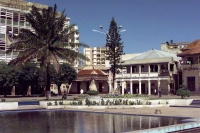
Beira
Situated in the central region of Sofala Province, Beira is the second largest city in Mozambique. It is home to the Port of Beira, acting as a gateway for the central interior por…
Beira
Situated in the central region of Sofala Province, Beira is the second largest city in Mozambique. It is home to the Port of Beira, acting as a gateway for the central interior portion of the country and the landlocked nations of Zimbabwe, Zambia, and Malawi. The Portuguese Mozambique Company originally established Beira in the late 19th century, with the Portuguese colonial government developing it further from 1947 until 1975. After gaining independence, Beira still sports aspects of colonial architecture but has deteriorated in some areas. Beira has a few interesting sights, including the Cathedral of Beira and the Fort of San Gaetano. Many of the shops, restaurants, and facilities in Beira cluster around the Praca do Município and Praca do Metical squares in the centre of town. There are some charming houses along the Ponta Gea and the port, including the Casa Infante de Sagres. Macuti Beach, with its iconic lighthouse, is easily the most fashionable part of Beira, though many parts are in need of repair. Savanna Beach is 16 miles (25km) out of town and you have to take a little boat across to the beach. The water is cleaner than in Beira and it's a great spot for fishing. About 8 miles (12km) out of Beira, between Macuti and the airport, Rio Maria is set between the sea and a lovely river. There are no facilities there but it is a very relaxing spot.



